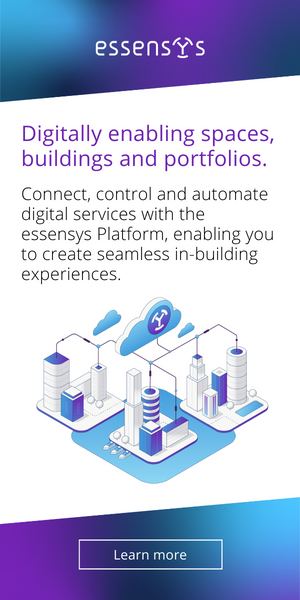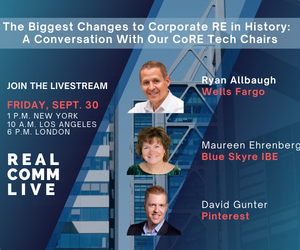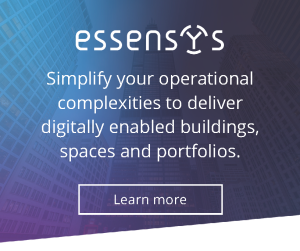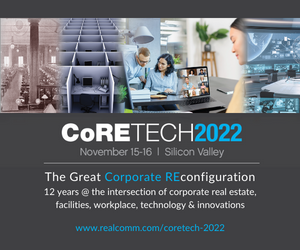Sophisticated Simplification Is Not An Oxymoron
Hope Dunleavy, Managing Director, Real Estate Advisory Leader, CohnReznick
Real estate organizations are powered by complex processes and technology infrastructures. But as current market conditions demand increased agility to make nimble business decisions and deliver on seamless experiences for customers, CRE businesses need to look to simplify these processes and architectures to remain relevant.
In the age of “all things smart,” the concept of simplifying is not about “dumbing down” your processes, but rather about “sophisticated simplicity”: processes and technologies that are not just easier to deploy, but easier to adapt, evolve, or even replace and in the end, easier to use. Ultimately, the goal is to enable not just more responsive business decisions and flexible operational strategies, but logical operations that can easily be adopted by existing and new employees. In doing so, organizations can remove friction, augment what works well, enable what increases speed and efficiencies, and create new value along the way.
(1) Simplify your target operating model
Within three years’ time, many of today’s operating models will be deemed prehistoric. Simplifying your operating model isn’t just righting the wrongs of the workaround technology quickly implemented to move to remote work environments; it’s taking stock of how your service delivery model and people are organized and comprehensively evaluating how that organization can be better. Evolving your CRE operations should be closely attuned to how you need to structure your organization so it’s future-ready. For instance, what can/should be outsourced? What can you insource through training and/or upskilling? Or, should you split the difference by co-sourcing?
But first, how do you begin approaching an antiquated knob and tube operating model to bring light to the people, processes, and purpose of your evolving CRE operations? Start by asking yourself the following questions:
- What are the core functions of our operations?
- How does information flow through our organization, and where do data points converge?
- Do we have the right people doing the right work?
- Where do our current operations detract from delivering the experience our building customers expect?
If you are uncertain of these answers, do not have documentation to communicate them to others, and/or cannot distill your operating model down to an elevator pitch, chances are your organization could benefit from simplification.
(2) Simplify your data strategy and integration
The data that can be captured from the real estate industry is endless. In the built world, models that gather “data for data’s sake” usually ask their data to provide precise answers to imprecise questions. Instead, to fully realize your organization’s proprietary information and intellectual property, work in tandem with your data by asking it to provide crisp, clean, yet imprecise answers to precise questions. This gives each end user the opportunity to add a human element – their own wisdom – on top of technology-mined insights to get to those unique answers.
The second part of this simplification is assessing how free-flowing your data is between your systems and among all stakeholders. Can key stakeholders find and access the insights they need to perform their roles efficiently?
Ask these questions to assess where your organization may benefit from simplifying its data strategy and integrations:
- What are the key decisions we need to make?
- Which data points should we stop gathering?
- How easily can we connect data insights from one system into another?
- Do we really know how much data is too much data?
To combat data exhaustion, develop a data strategy to help you determine what information is most essential and relevant to your organization. There must be a specific purpose for each insight you collect and a plan for how you’ll apply the data. If those doesn’t line up, evaluate whether it is necessary to retain the data at all.
(3) Simplify your tech stack
A critical component to simplification of your operating model is an audit of the technologies that drive it. Legacy ERPs have been kept on life support while new tech has proliferated and many organizations have dived headfirst into “I’ve got an app for that” solutioning. This has created a buffet of systems to integrate and datasets to connect. Now that we’ve settled into this next-level environment, it’s time to reconcile old and new systems to find your most simple, most effective combination.
When assessing your tech stack, ask:
- Do all of our systems increase speed of delivery for functions or decisions required of our organization?
- Have all of our technology platforms/apps been adopted across the board by department employees? Or are some little used?
- Are our tech-enabled amenities really driving value to tenants? Would the capability even be missed if it were gone?
- Do our technology solutions feel like they are plugging holes vs. being a cog in a larger wheel?
Organize your stack in a manner that is interchangeable using a composable architecture that deftly blends the old with the new. But keep in mind that technology is a vehicle to serve a bigger purpose. If it is not easily understood by users and consumers, your investment will never be recouped no matter how many more apps you tack on it.
(4) Simplify your processes
Simplifying processes is not about more automation, but about fewer touchpoints, shorter workflows, and less friction. Start by mapping out the straight line of how the process should be done, then eliminate the variations. Once that has been done, sprinkle in technology and automation when and where it adds value.
Processes that are truly repeatable should be assessed as potential areas to employ automation. The real goal of automation is not to create processes that exclude the human element, but instead to bring your people only into the steps and stages requiring their review. Remember, artificial intelligence and machine learning are not free from bias; you’ll still need to involve your team in the value-added decision-making that requires their wisdom, as mentioned in #2 above.
- Where are there opportunities to be more efficient through automation?
- Where can we use automation to drive down the resources required to perform a specific function/process?
- Are there roles and insights my team would like to provide, “If they had more time in the day?” What can we take off their plates through automation, so they get that time back?
In the end, the technology that enables processes and decision-making should be ubiquitous to the team and invisible to the end user. If it is not, it’s once again time to edit your processes and simplify.
The “keep it simple” mantra goes something like this: The fewer moving parts, the easier to deploy, connect, train, and replace the elements of your operations weighing you down. But once you have a holistic understanding of where your organization needs to be simplified, how do you act upon that understanding, sophisticatedly? Our experience has led us to this complementary mantra: Build only what you must, source what you can, and partner when you can’t do either. And make sure you always find a place for the highest and best use of your people every step of the way.
This Week’s Sponsor
As a leading advisory, assurance, and tax firm, CohnReznick helps forward-thinking organizations achieve their vision by optimizing performance, maximizing value, and managing risk. Clients benefit from the right team with the right capabilities; proven processes customized to their individual needs; and leaders with vital industry knowledge and relationships. Headquartered in New York, NY with offices nationwide, the firm serves organizations around the world through its global subsidiaries and membership in Nexia International. For more information, visit www.cohnreznick.com.
Read Next
 5/15/2025
5/15/2025
Tech, Talent and Transformation: 2025 Digie Finalists Announced For 27 years, Realcomm has presented the Digie Awards to acknowledge companies, real estate projects, technologies, and individuals that have advanced the commercial real estate industry through the strategic use of technology, automation, and innovation.
 5/15/2025
5/15/2025
Empowering Space Management with Data-Driven Visualization For effective CRE space management, it’s critical to centralize lease data, maximize rental square footage (RSF), improve energy efficiency and reconfigure spaces to meet changing needs.
 5/8/2025
5/8/2025
The AI-Powered Workplace Evolution: Redefining the Business Landscape In today's rapidly evolving business environment, the fusion of Artificial Intelligence (AI) and Workplace Management is revolutionizing the way organizations approach workspace optimization and operational efficiency.
 3/27/2025
3/27/2025
The Convergence of Edge Computing, Cloud, and AI in Building Automation and Smart Buildings In the built environment, we have seen the convergence of Operational Technology (OT) and Information Technology (IT), later expanding to include Workplace Technologies (WP).







%20(1)%20(1)%20(1).png)









